With crisp autumn days and harvest celebrations, the quintessential image of an apple tree weighted down with its bounty of red, ripe fruit paints an idyllic picture. However, the journey to a productive harvest requires knowledge, patience, and practical skills. The needs of an apple tree, from its initial planting and establishing phase, through the strategies for pruning, training, and health maintenance, to the final stage of harvesting and storing, are as complex as they are intriguing. This comprehensive guide aims to illuminate these aspects as integral steps to help you navigate this rewarding journey. Given the right care and attention, your apple tree can not only thrive but also offer a bountiful supply of delicious, home-grown apples for many autumns to come.
Understanding Your Apple Tree Needs
Title: Orcharding 101: The Essential Needs of an Apple Tree at Various Stages
At the heart of any hobbyist fruit grower’s garden is often a mixture of passion, knowledge, and a deep respect for sublime, organic processes. An intriguing member in many such enthralling gardens is the apple tree. More than just a fixture of nature or a source of fresh fruit, apple trees can bring to a gardener lessons about patience, attention to detail, and the amazing interplay of elements that culminate in the creation of a juicy apple.
Firstly, understanding an apple tree’s basic needs is crucial, regardless of the growth stage. Like all living beings, apple trees need the simple but essential ingredients of sunlight, air, water, and nutrients. However, the proportion, timing, and nature of these elements vary greatly between different stages of the apple tree’s life.
After Planting
In the weeks following an apple tree’s planting, its needs are basic yet pivotal. Water is of utmost importance within this period. With new roots expanding into the soil, providing ample water will ensure their successful establishment. This initial watering schedule is a juggle, so be careful not to waterlog the tree while also preventing it from drying out. Moreover, moderate sunlight is helpful, though, in the hotter regions, protection from scorching noon sun can secure the tree from undue stress and damage.
Young Tree Years
As the tree transitions from its early weeks to the youthful years, the emphasis shifts toward ensuring healthy growth and disease prevention. Providing a balanced feed of nutrients, often in the form of a gentle, slow-release organic fertilizer, is beneficial at this stage. A happy marriage of nitrogen, phosphorus, and potassium will support growth, flowering, and root development. Regular watering, but not overwatering, remains the mantra. Pruning, a sort of arboreal haircut, now enters the equation, aimed at shaping the tree, opening up its structure for better sunlight penetration, and removing any diseased portions.
The Fruit Bearing Stage
As the apple tree blossoms metaphorically and literally, its demands shift yet again. The tree will need more comprehensive feed at this stage, one that offers a wider range of nutrients. The addition of Calcium, especially, cannot be overstated as it directly correlates with the quality of apples produced. Consistent watering throughout the growing season, particularly during dry spells, helps ensure healthy fruits. Also, don’t neglect periodic inspections for pests and diseases.
Mature Tree Years
In its mature years, an apple tree is much more forgiving. It primarily needs maintenance pruning, routine checks for pests and diseases, and watering during extended periods of dry weather. Application of a balanced, all-purpose organic fertilizer can continue as in previous years. However, special attention should be paid if the tree appears stressed or if fruit production wanes, as mature trees can experience age-related changes.
Remember, each apple tree is an individual, its needs subtly changing by variety, climate, soil, and numerous other factors. But understanding these guiding principles can provide a good starting road map to the fascinating and fruitful journey of raising an apple tree. Whether you’re a seasoned gardener or a blossoming enthusiast, the joy erupting from the sight of those apple blossoms and the first bite of a tree-ripened apple is likely to be one of the most rewarding experiences ever tasted. Happy gardening!
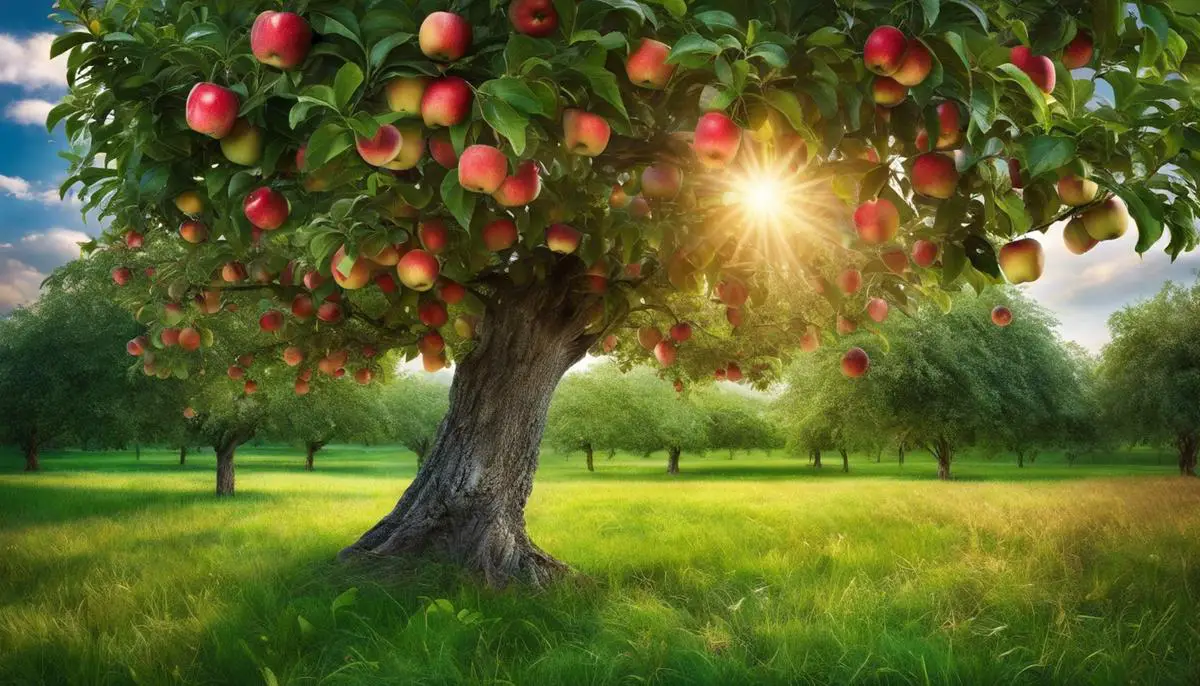
Planting and Establishing Apple Trees
Each phase of planting an apple tree builds on the one that came before. While meeting the basic needs of your apple tree such as sunlight, air, water, and nutrients is essential, there is more to know on how to ensure successful planting and establishment of an apple tree.
Starting off, it’s important to plant the tree in a suitable location. Not overcrowded by other trees, your apple tree should have room to spread its branches and take full advantage of the sunlight. The tree will be happy in a well-drained soil, with a slight acidic to neutral pH (6.0 – 7.0). Before planting, keep the roots moist to avoid drying. Dig a hole that’s large enough to fit all the roots, spread them outward and cover with soil, ensuring that the graft union (a swollen area on a grafted tree) is a couple of inches above soil level.
After planting, the tree will be in a vulnerable state. So, staking your young apple tree plays a significant role in its establishment. It provides the needed support, allowing the tree to stay upright and develop a strong root system. Use a stake slightly taller than the sapling, and loosely fasten a tie in a figure eight pattern – this will prevent the bark from rubbing.
It’s also critical to know that roots are in their active growing period during the fall months when the temperatures cool down. A layer of mulch around the base of the tree (not touching the trunk) will help conserve soil moisture and regulate ground temperature, enhancing the root growth.
Monitoring the tree’s growth becomes an essential step during the first few years. Despite the necessary regular watering and balanced feed of nutrients, some growth can be detrimental to the overall development of the tree. So it’s crucial to watch out for water sprouts (vertical branches) and suckers (growth from the base), and remove these at sight, promoting a healthier growth pattern.
Lastlly, winter protection is undeniable for apple trees in colder regions. Tree guards can be used to fend off critters, while burlap wraps can shield from harsh winds. For newly planted trees, a cylinder made of hardware cloth placed around the tree can protect from hungry critters, ensuring the tree makes it through its first winter. Don’t forget, however, that protection needs to also happen throughout the stages of your apple tree’s life – maturity doesn’t equate to invincibility. Regular check-ups, pruning and tailored care are key in maintaining a thriving, fruit-bearing apple tree.
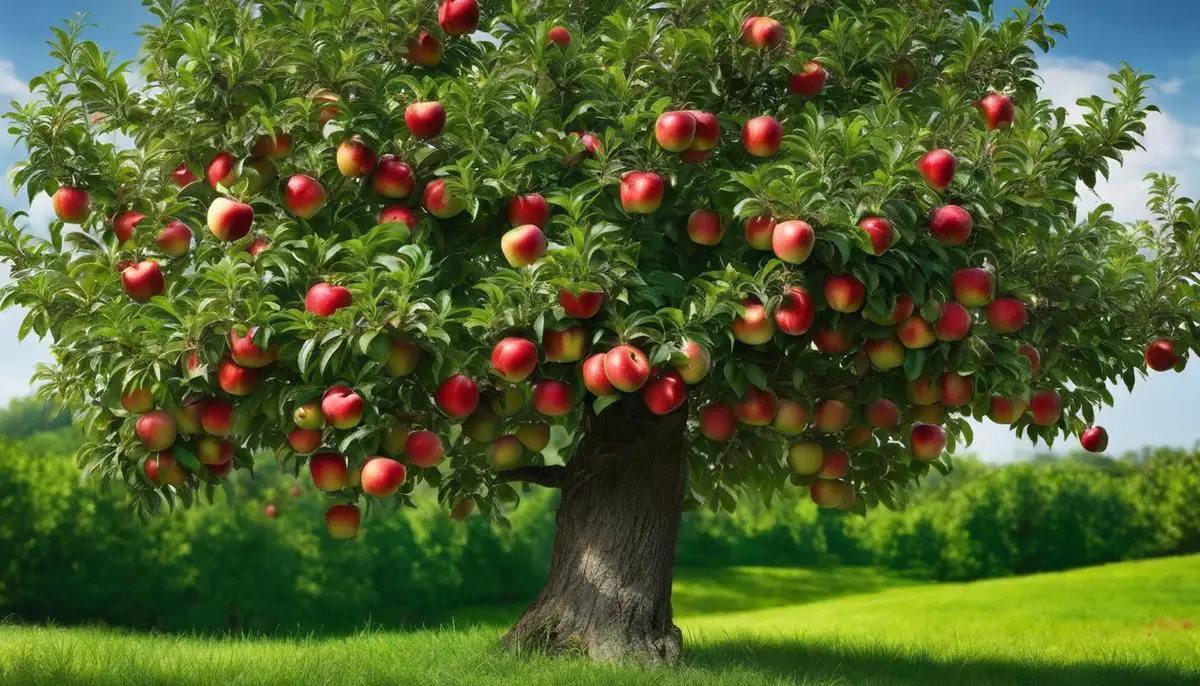
Pruning and Training Apple Trees
Harnessing the Apple Tree’s Potential: Pruning and Training Tips
The apple tree is a gift that keeps on giving. Much has been discussed regarding its needs, from choice nourishments to the adequate care needed at different stages of growth. However, one aspect which tends to overlook is the importance of pruning and training an apple tree. This under-valued practice may seem merely cosmetic, but it’s essential for the overall health and maximum yield.
Pruning and training apple trees isn’t just about shaping the tree’s appearance, although that’s part of it. Effectual pruning helps dodge the risks of disease, assures sufficient sunlight penetration, and encourages superior fruit production. Training, on the other hand, directs the tree’s growth to optimize fruit production and ease of harvest.
So, how does one perfect the art of pruning and training apple trees? Here’s the low-down.
Pruning is typically carried out in late winter, during the trees’ dormancy. Why then? Simple. It’s easier to see the tree’s structure when leaves aren’t present. It also sparks a burst of new growth in the coming spring – an ideal time for healing injuries caused by pruning. Pruning during this time also minimizes risk of infection as most insects and diseases are dormant too.
Before starting, remember the golden rule of pruning: less is often more. The goal is not to cut away a significant chunk of the tree, but rather to remove dead, damaged, or diseased branches. Always aim to retain around two-thirds of the tree’s height every year.
When training apple trees, the key lies in understanding the orientation of branches. The ideal branching structure resembles a Christmas tree – wider at the bottom and tapering towards the top. For dwarfs and semi-dwarf apple trees, the central leader training system works well. As the name suggests, this method keeps a central ‘leader’ branch, with subsequent tiers of branches spaced out in a spiral-pattern around it.
Training involving more extensive tree shaping must be initiated while the tree is still young. Typically, this starts its first spring and continues in subsequent years. Young branches are pliable and can be easily bent using stakes or strings, but remember not to apply pressure abruptly, as this could lead to splitting.
In conclusion, pruning and training are not excessive indulgences but required routines in the journey of cultivating apple trees. With the right techniques, and consistent care, one’s passion project of an apple tree can bring much satisfaction and fill many apple pies, year after year. Give these incredible trees the opportunity they deserve with good routine maintenance and let them surprise you with their bounty.
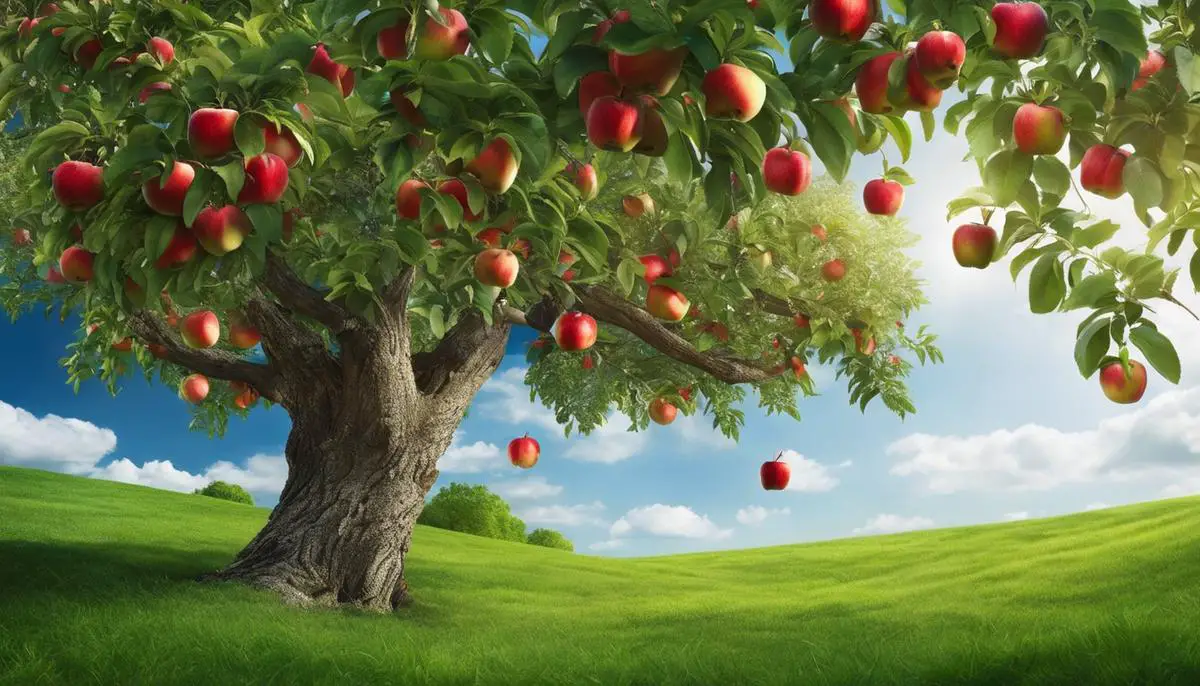
Pest and Disease Management
In the journey of apple tree care and cultivation, we have already covered a range of crucial aspects, delving into the needs, care routines, planting terminologies, and pruning techniques.
Now, we approach a part of the care routine that is as vital as nurturing itself — protection against pests and diseases.
So, what are some common pests and diseases that can potentially inflict harm on your apple trees, and how do you control them?
Caterpillars are one of the primary pests to look out for. Codling Moths, in particular, present a significant concern for apple growers.
Their larvae burrow into the apple, leading to a hollowed fruit filled with frass (insect waste). A proven solution is using pheromone traps that lure and trap male moths, reducing their population.
Aphids can also be detrimental to apple trees. Recognizable by their green, pink, or black bodies, they suck sap from the leaves, stunt growth, and promote sooty mold.
Combat these pests using beneficial insects such as ladybugs, lacewings, and parasitic wasps, who feast on aphids and keep their population in check.
Apple Scab, a fungal disease, often wreaks havoc among apple trees. It manifests as dark, scaly lesions on the leaves, blossoms, and eventually, on the fruit.
The application of fungicides and proper sanitation practices (like cleaning up fallen leaves) help control this menace.
Fire blight is another debilitating disease, bacterial in origin, that causes wilting, blackening, and a ‘burned’ appearance of branches.
To control it, prune infected branches (preferably during winter), sterilize your pruning tools, and consider spraying streptomycin during bloom season.
Understanding and adapting to the signs of infections, selecting disease-resistant apple varieties, regular inspections, good sanitation practices, and timed interventions can save your prized apple tree from the twin scourge of pests and diseases.
You might lose a few battles, but with patience, knowledge, and persistent care, you’ll win the war.
In the end, the sight of wholesome, juicy apples hanging from the branches will be a sweet victory.
With that, we hope this pest and disease control discussion enlightens and helps further fuel your passion for apple tree cultivation.
Happy growing!
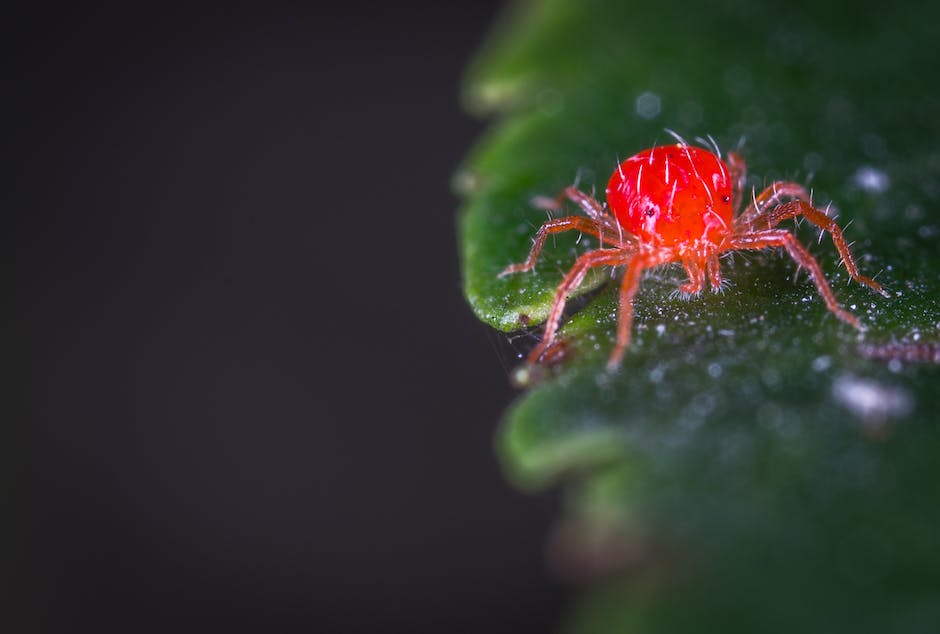
Harvesting and Storing Apples
The tree is cared for, the time is ripe, and the fruits are swollen with sweet promise – all pointing to an imminently forthcoming harvest.
Harvesting apples is an art that requires a modicum of observation, a touch of understanding the tree’s language and a dash of intuition. With it comes the joyful reward of biting into a perfectly ripe, home-grown apple.
Apples don’t ripen simultaneously on a tree. So determining the right time for harvest requires keen inspection.
Generally, harvesting at the end of summer or beginning of fall, between August and October in most regions, is commonplace.
Cradling and slightly twisting the apple to see if it detaches from the tree easily is a reliable method to discern readiness. Beware though, of pulling too hard and damaging your apple’s spur for the next season!
Living in the digital age, a refractometer can also be used to measure the apple’s sugar content. If the refractometer reading falls between 14 and 16 Brix, the apple is ready.
Additionally, consider the color change at the base of the fruit. Most apple varieties transform from leafy green to a hearty, ripe color.
Once an apple is harvested from the tree, it will no longer continue to ripen off the branch.
Once harvested, preserving the fruit’s freshness until savoring becomes paramount.
Storing apples appropriately is just as crucial as timely harvesting.
Apples best preserved in a cool, humid environment. Ideally, the temperature should be between 30-32 degrees F, with 90% humidity to keep them from desiccating and shriveling.
But remember, one bad apple can spoil the whole barrel.
Check the fruits for blemishes, tears, or bird pecks before storage.
Those with imperfections should be consumed first, and not stored with the healthier ones.
Apples also produce ethylene gas, which can wilt other produce stored nearby.
Hence, it’s best to store them separately.
Apples can manifest unique attributes while in storage, with flavors evolving and improving over time.
Some, like ‘Fuji’ or ‘Granny Smith’, have a significantly longer shelf-life, while others like ‘Cox’s Orange Pippin’ reach their full flavor potential after a storage period.
Wielding your harvesting tools with knowledge, storing with precision, and unearthing the unique storage attributes of different apple varieties are pleasurable pastimes for a hobbyist.
Happy harvesting!
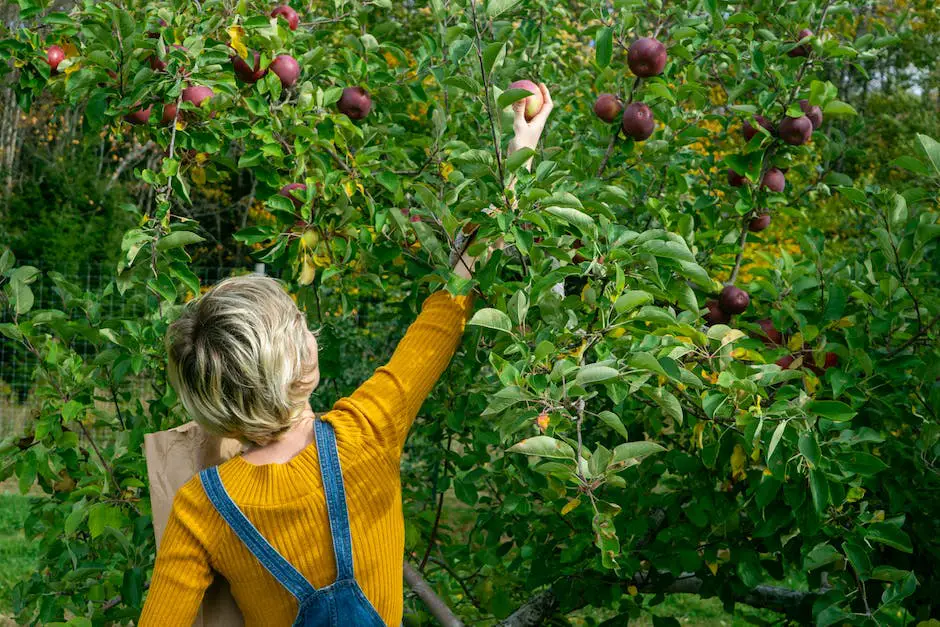
After embarking on this educational journey through the life cycle of apple cultivation, you now have the knowledge necessary to provide your apple tree with the nurturing care it needs from start to finish. Each step – from understanding your tree’s requirements and properly planting it, to caring for its health and finally reaping the fruits of your labor – can improve the quality of your yield, and deepen your connection to the natural world. Remember, however, that a tree’s needs are dynamic and ongoing, so stay observant and open to learning. With time, patience, and diligent attention, you can look forward to the sweet reward of biting into a fresh apple straight from your own tree.